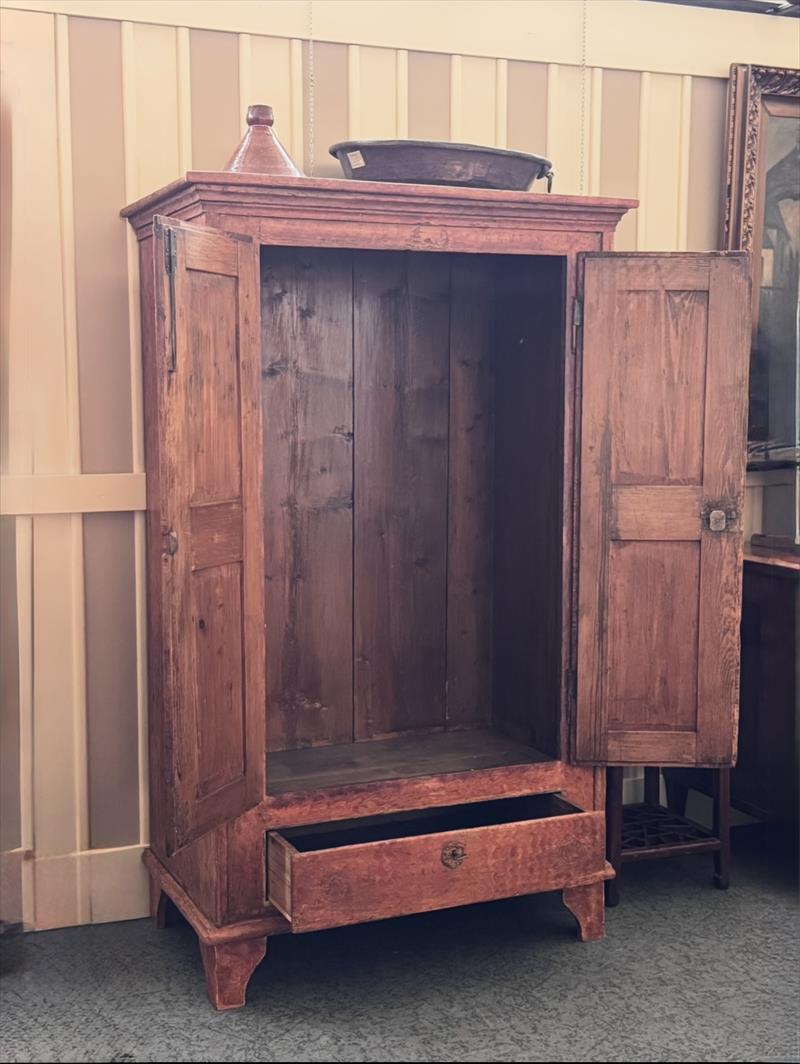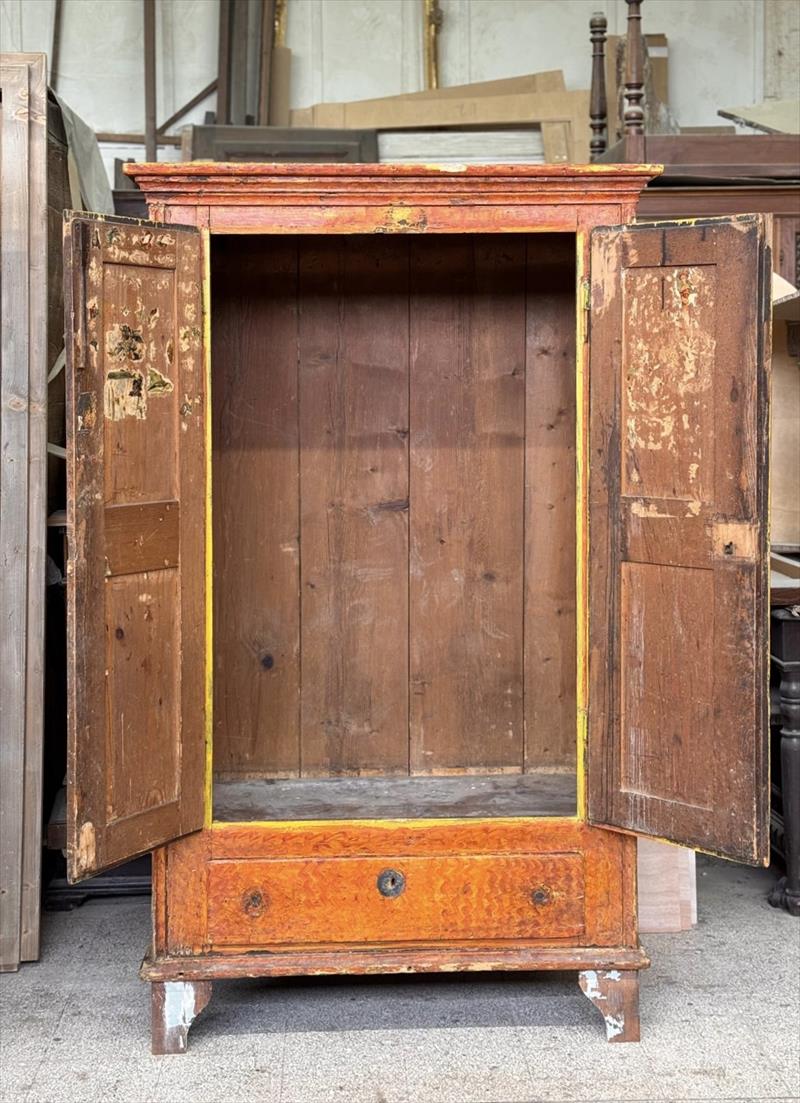A cabinet from the late 18th century, originating in central Italy, between Umbria and the Marche.
Crafted in fir wood and decorated using the technique known as lacca povera — a humble method employing brush, cloth, and natural pigments — it was designed to elevate modest materials with faux, imperfect marbling that mimicked the veining of more precious woods and stones.
Two panelled doors and a spacious lower drawer define its practical soul: a piece conceived to store clothing, linens, and household textiles.
Its shape is restrained, with subtly shaped feet and a slightly projecting top moulding — no embellishments, yet everything speaks of balance and dignity.
This is not an aristocratic piece, but a domestic one — the product of arte povera, intended for the bedroom of a sharecropper’s house or a servant’s quarters in a bourgeois home.
And it is precisely this that makes it striking today: it is honest, authentic, functional — and still intact in its quiet charm.
It is a piece that reveals how deeply rooted the pursuit of beauty was, even in the simplest of settings, where means were few but taste was not.
The cabinet is in excellent condition: carefully restored, sturdy, clean, thoroughly treated against pests, and ready to be used again — without hesitation.
It’s not just an aesthetic choice, but an act of consistency: restoring means reclaiming value, avoiding waste, and choosing quality that endures.
- Material: Flecked fir with rustic lacquer finish
- Size: 115 × 65 × 186 h cm; clear internal depth: 56 cm
- Condition: Restored
- Period: Ultimo quarto del '700
- Style: Louis XVI
- State: Optimal conditions




